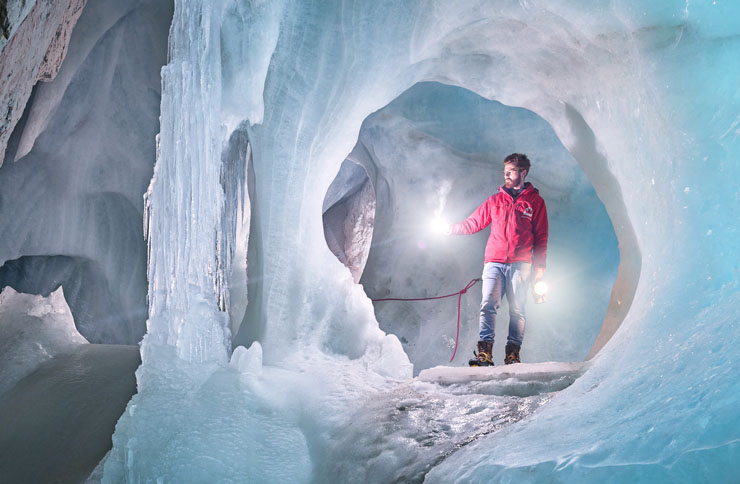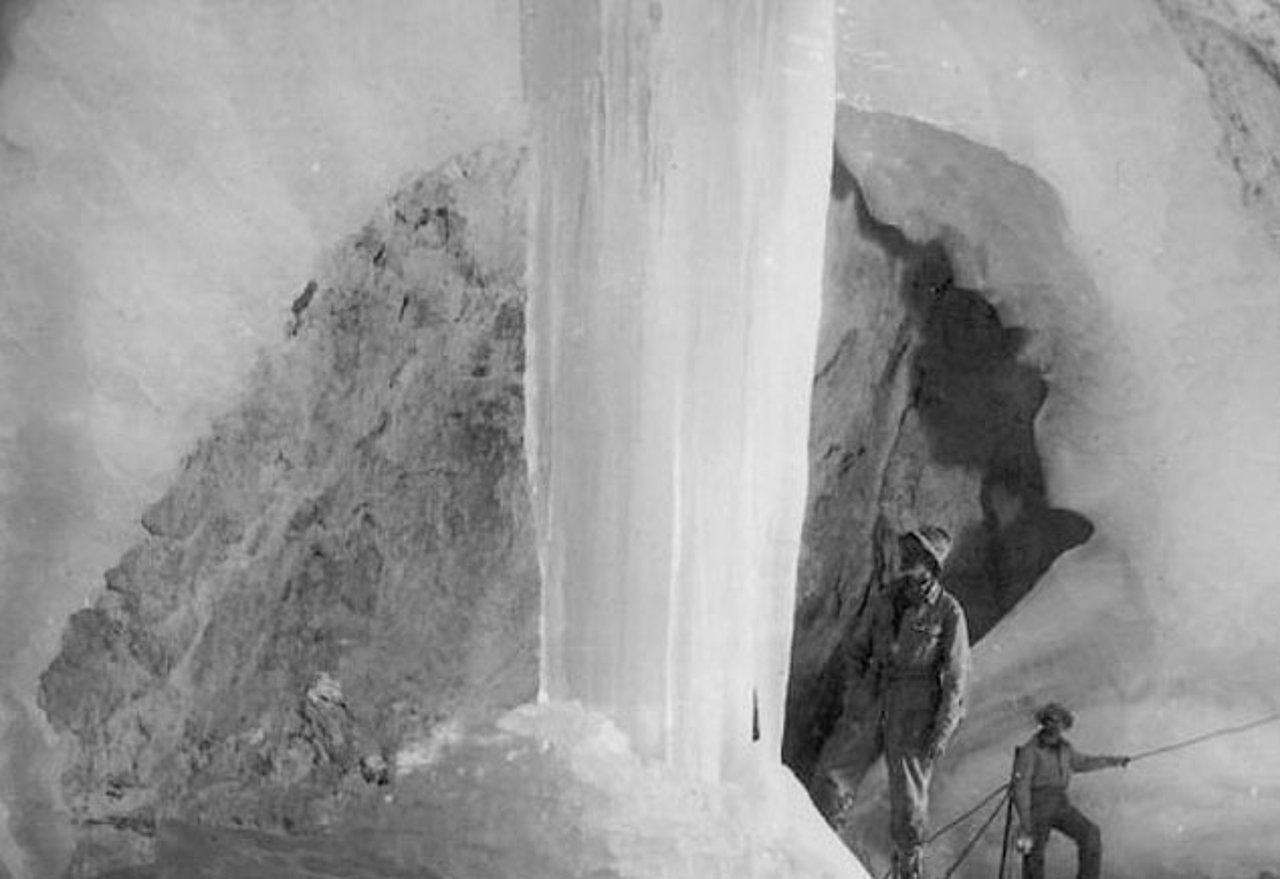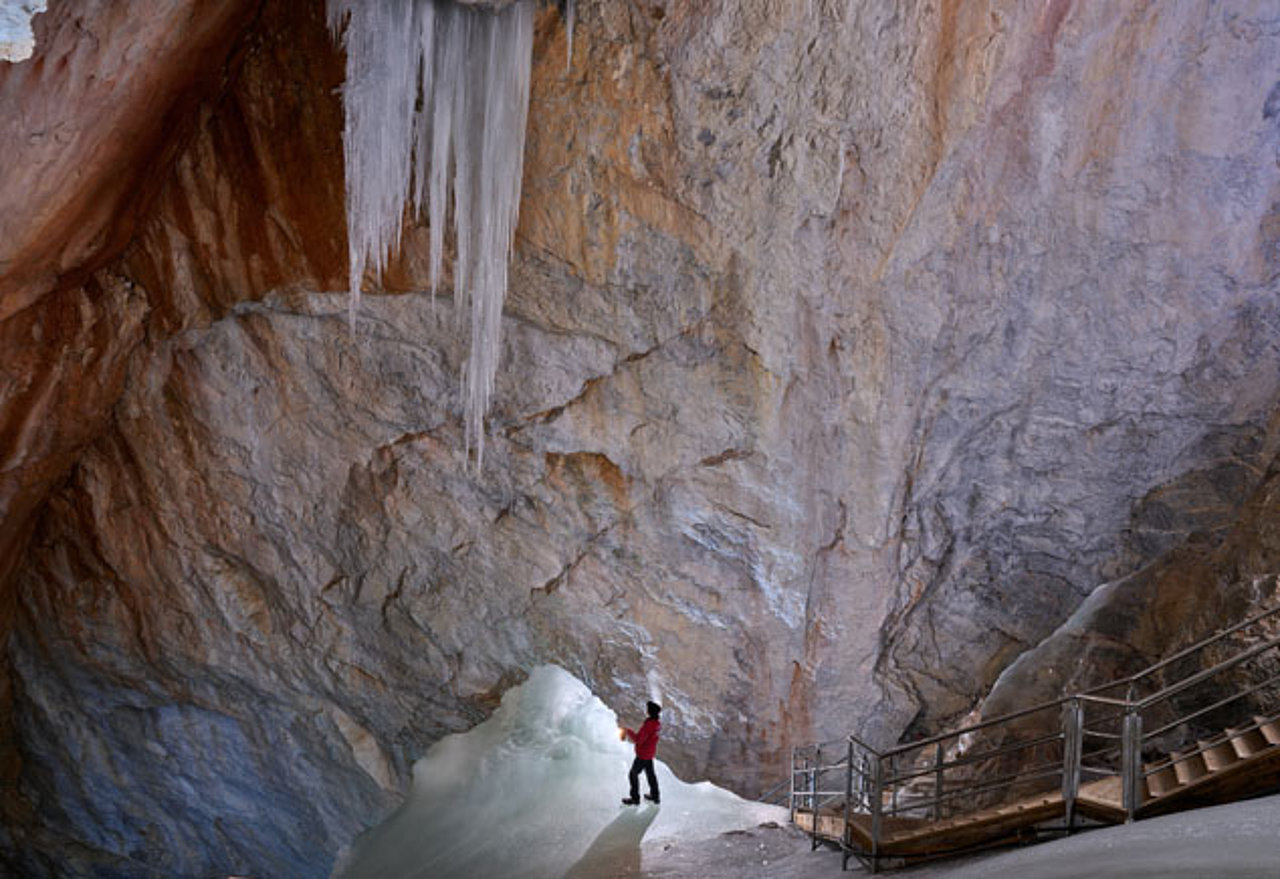
What did the Eisriesenwelt look like in the past?
As the largest ice cave in the world, the Eisriesenwelt is an interesting object of research not only for geologists at the University of Innsbruck. Scientists study the Eisriesenwelt and try to reconstruct what the cave looked like thousands of years ago, how climate change affects it and what the cave reveals about the long-term development of the climate.
What is certain today is that there is still ice in the Eisriesenwelt, which must have been there at the time of Ötzi. But currently only the first 500 metres of the cave are iced - that was different in the past. There must have been much more ice in the ice cave near Salzburg in the past. This is also proven by findings of cave limestones and CCCs where no more ice can be found today.

[Translate to Englisch:] Die Eisriesenwelt Anfang des 20. Jahrhunderts
Is the Eisriesenwelt acutely threatened by climate change?
In the Eisriesenwelt, where ice is present, temperatures are currently just below freezing. Given the reality of climate change, concerns may arise regarding the future existence of the Eisriesenwelt. However, Christoph Spötl provides initial reassurance:
The Eisriesenwelt is one of the most stable and resilient ice caves in the Eastern Alps. This is due to the altitude, size and weathering. Stable conditions can be expected in the coming decades.
Rescue by the chimney effect:
The so-called chimney effect is responsible for the relatively stable temperature conditions in the Eisriesenwelt. This is caused by the fact that there are two or more entrances that allow air to flow through the cave system. In winter, when it is very cold outside the cave, the comparatively warm air rises in the cave and escapes at the upper entrances.
Due to the negative pressure created, the cold air from outside is sucked in through the lower entrance and enters the cave interior, which reduces the temperature and promotes ice formation or the preservation of existing ice.
When you come to visit the ice cave in summer, you feel the opposite effect at the entrance: the cold air from the cave sinks to the lower entrance and creates a wind that comes towards you.

[Translate to Englisch:] Veränderungen werden beobachtet und dokumentiert
Forschung: Höhlen-Karbonate messen
Researchers gain reliable information about the history of the climate - in and outside the Eisriesenwelt - by collecting and analysing so-called CCCs (cryogenic cave carbonates).
These crystal-like structures form when there is thick ground ice in the cave, water drips from the ceiling and the temperature is just below zero degrees Celsius. The water droplets hollow out the ice on the floor and the collected water gradually begins to freeze. In the process, the carbonates dissolved in the water (CCCs) are formed by crystallisation.
Numerous samples have been taken in the Eisriesenwelt and accurately dated using uranium-thorium dating. This method allows researchers to understand how the climate inside and outside the cave has changed and when temperatures exceeded the freezing point. There were six icing phases in total:
- The oldest about 75,000 years ago
- The youngest about 12,000 years ago
It is highly probable that changes that would have taken thousands of years back then are happening much faster today.
The interpretation of CCCs: A challenge
The interpretation of the data obtained from the CCCs is difficult because the individual microclimate of the cave plays an important role in its formation. The location of the Eisriesenwelt, age, length / size, openings as well as their position and branching make the ice cave unique.
CCCs can mean that at the time they were dated, the climate outside the cave had also changed, causing the temperature in the cave to rise. At the same time, a rise in temperature is also conceivable because the entrances were covered in ice. Or there were completely different reasons behind it, which can hardly be deciphered with certainty.
To make reliable statements about the entire climate, therefore, CCC finds from different caves are necessary, which are compared with each other (in order to be able to exclude icing of the entrances and individual peculiarities of a cave).
Protecting the Eisriesenwelt and the climate.
How climate change will affect the Ice Giant World, other ice caves and the world's climate in general in the long term is something that further research or time will have to show. However, one thing is certain: we have a responsibility to protect and preserve the wonders of nature from unnatural, human-induced climate change.
It is to be hoped that future generations will also be able to experience the fascination of the ice giant world with their own eyes. Because if we do not manage to limit global warming to a natural level, the chances are not good even for the actually so resistant and millennia-old Eisriesenwelt.
Book your tickets now!
Conveniently select your desired date via our online ticket booking and book an unforgettable excursion to the largest ice cave in the world to see the beauty of nature and at the same time the changes caused by climate change with your own eyes.
Book your adventure trip to the Eisriesenwelt now!
